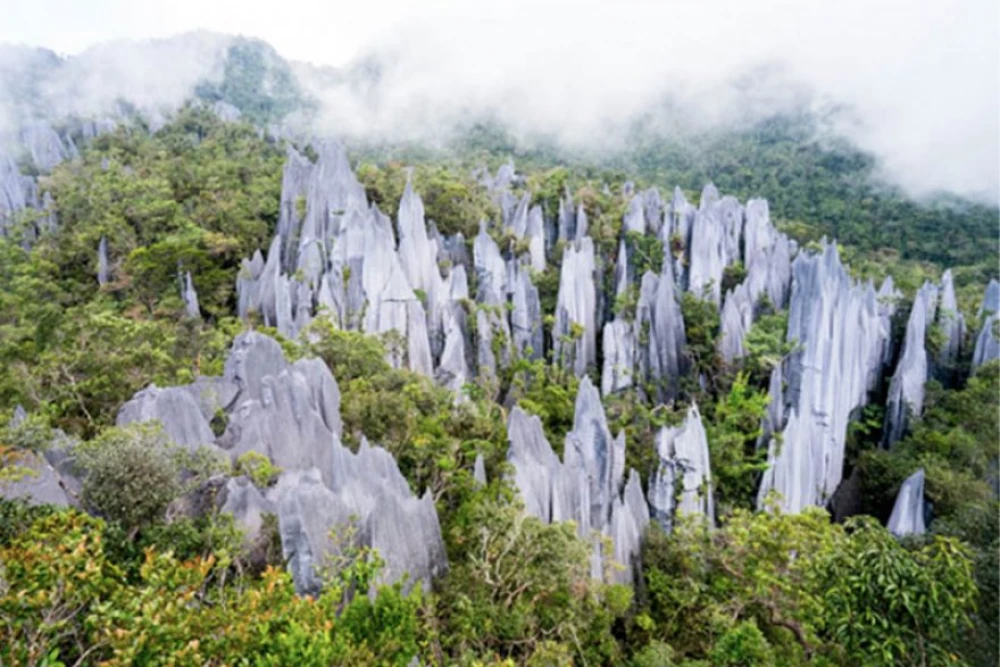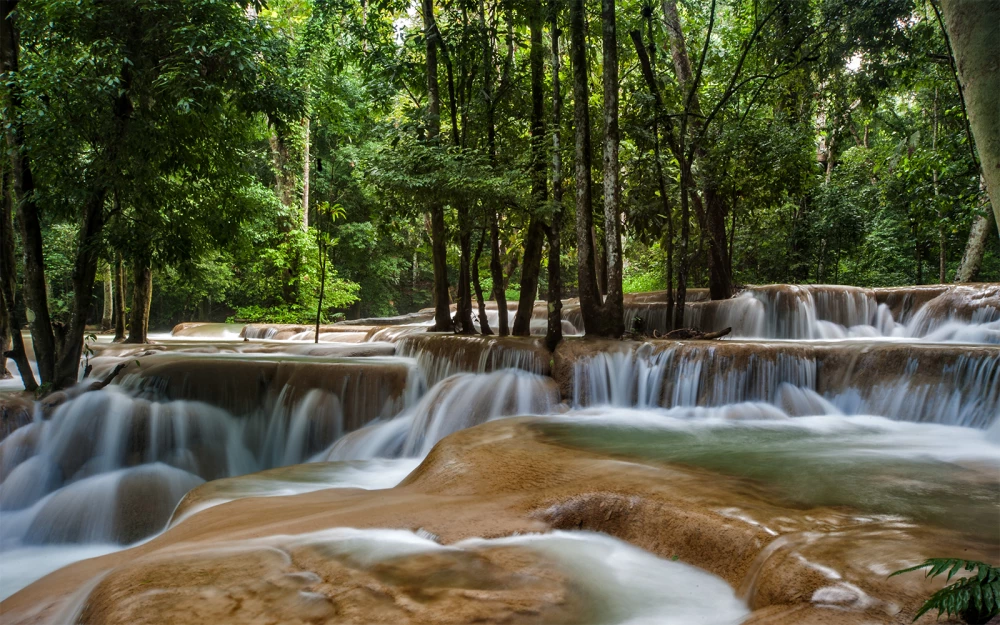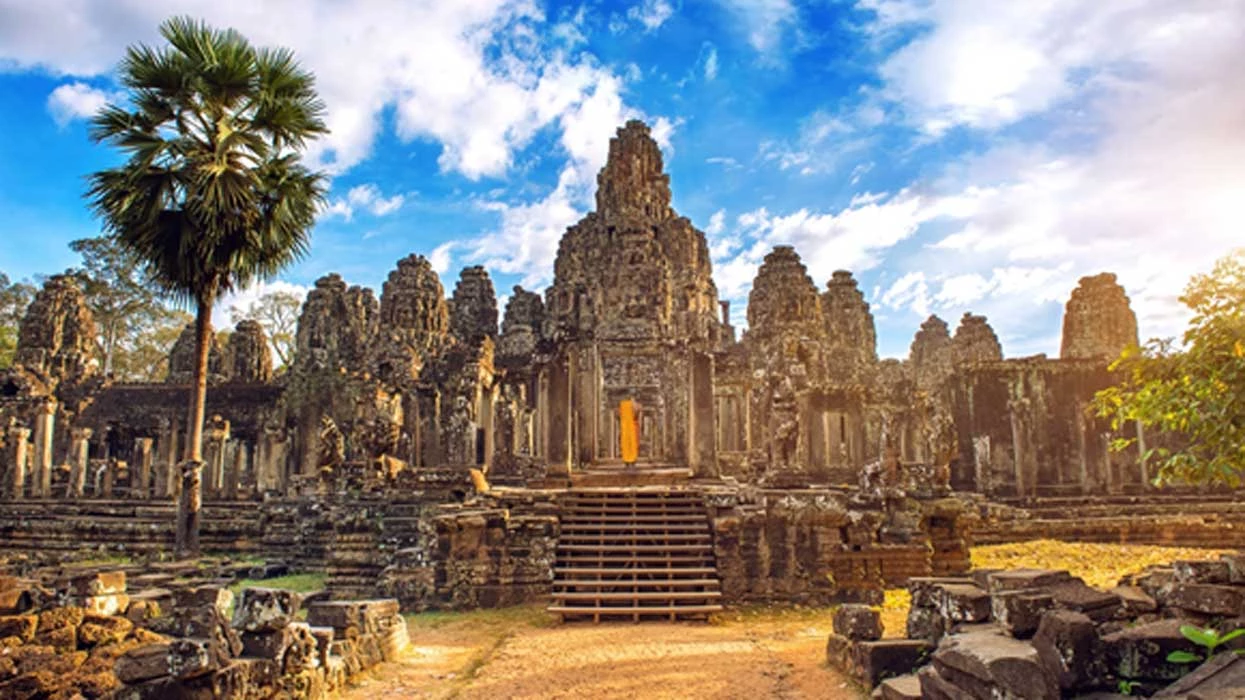
Cambodia
Region map
General information
Cambodia Reopening
Cambodia is now fully open with what is currently the most lenient entry procedures in Southeast Asia, with no testing requirements at all. Travellers need only provide proof of vaccination and health insurance and are free to explore Cambodia. Additionally, they have announced the reinstatement of Visa on Arrival for all travellers to Cambodia whether by air, sea or land.
For anyone who has ever dreamt of experiencing the wonders of Angkor without the crowds, there has never been a better time to go!
Steps for Travellers:
- Pre-arrival:
- Guests should check with airlines before their flight to Cambodia to clarify any requirements before boarding their flight.
- Arrival:
- Visa: all travellers by air, sea and land are eligible to obtain a Visa on Arrival (VOA) when entering Cambodia
- Proof of full vaccination: at least 14 days prior to departure to Cambodia to be presented upon arrival; should show vaccine type and date of vaccination.
- Proof of health/medical insurance: covering COVID treatment with a minimum coverage of $50,000 USD. Those who do not already have it can purchase it upon arrival for $90USD.
- Download ‘Tracerapp‘ before exiting the airport
- Children under the age of 18 do not need to be fully vaccinated to enter without quarantine as long as parents/guardians are fully vaccinated.
- During Stay:
- Guests are encouraged to wear masks in public.
- Guests who test positive for COVID during their stay will be allowed to receive treatment or to self-isolate in their hotel.
Note: Unvaccinated or partially vaccinated visitors will be subject to a 14-day quarantine upon arrival at facilities designated by the Cambodian Ministry of Health. Accordingly, we do not recommend travellers to visit Cambodia if they are not fully vaccinated.
General information
The Kingdom of Cambodia is home to Angkor Wat, the world!s largest and most enigmatic religious temple. Cambodia draws visitors from around the globe to marvel at its fascinating Khmer culture, French colonial-inspired cities, and a national identity that is perhaps Southeast Asia most quixotic- not far from inspiring temples can be found the killing fields of the Khmer Rouge. Cambodia offers pristine jungle and abundant wildlife. The picturesque countryside is snaked through by the mighty Mekong River, which exemplifies Cambodia!s ancient reliance on its waterways to sustain its way of life.
Adventure Asia offers the very best of adventure, activities and excursions in Cambodia. Whether you seek trekking in Kampot, cultural sightseeing in Phnom Penh, unseen Angkor Wat or chilling in Kep, Adventure Asia will help you create an itinerary that suits you best.
Cambodia itineraries
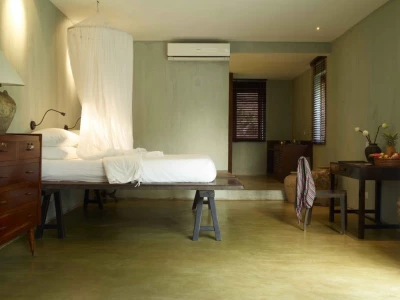
Treasures along the Mekong river from Cambodia to Vietnam
Discovering two beautiful Indochina countries with their stunning geography, amazing cuisine, pristine beaches and daily activities like the way locals do. From the upstream to the downstream of the Great Mekong river, our journey will bring you to the fantastic landscapes, breathtaking architectures, historical sites, friendly smiles of local residents and help to reveal secrets that make this region so special. One magnificent Vietnam and one hidden charming Cambodia, you will have unforgettable experiences with a ton of wonderful moments!

Be Blessed by Monks in a Pagoda in Oudong
Imagine a private blessing ceremony prepared just for you and carried out by monks. This is what awaits you in the city of Oudong. Once the capital in the latter stages of the Khmer Empire, Oudong is the crowning site of a former king. It sits atop two parallel ridges north of Phnom Penh. The location offers incredible views of rolling sugar palm trees found in the scenic countryside. In one of the contemporary pagodas, Buddhist monks are awaiting to host a private blessing ceremony just for you. They’ll wish you health and, of course, a safe journey as you continue on to Phnom Penh. But before the day is over, you’ll stop at a silversmithing village and enjoy local food at a restaurant.

Mekong Sunset Cruise
The Mekong river is home to the Tonlé Sap, a freshwater lake that boasts of floating villages and a vibrant ecosystem. Also known as the Boeung Tonlé Sap, it’s best enjoyed from June to October when there’s access to the surrounding forests. For bird watchers, December to April is the ideal time to come here as sanctuaries are filled during that time. The freshwater lake is the largest in Southeaster Asia, spanning 250 km in length and 100 km in width. It’s huge, but shallow, going only as deep as 10 meters. The most popular village is Chong Khneas, which offers scenery of many houses, shops, and schools bobbing over the water. The area is suited to tourists, with souvenir and snack shops littered throughout. There’s also a Gecko Environment Center. Enjoy coconut juice and other refreshing cuisines aboard your private boat as you bask in this sunset cruise.
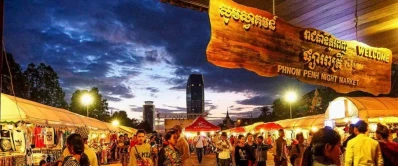
Phnom Penh Night Excursion On Board a Vespa
Lounge with a rooftop bar as you look down upon the beautiful Mekong River. Sitting near the Phnom Penh riverfront is a once in a lifetime experience. You’ll get to enjoy it on this blissful night tour where you’ll drink and dine like a local. Switch things up when you get on your Vespa and zoom through the busy streets of Phnom Penh.
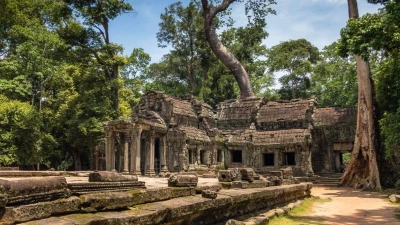
Discover Tonle Bati, Takeo, Phnom Da, and Phnom Chisor
Discover at least four ancient temples in this exclusive getaway which begins on the incredible lake of Tonle Bati. A popular fishing spot for locals and tourists alike, the lake has its own unique attractions. Bamboo shacks are located throughout the water, making it a perfect getaway spot for visitors and residents. Food and drink stand nearby mean you’ll never have to leave if you don’t want to.
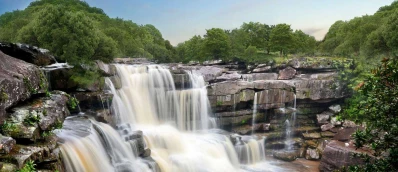
Bokor Bike And To Hike Mountain Waterfall
This whole day adventure allows one to enjoy the Kampot countryside by bike and Veal Pourch Waterfalls on foot. After beginning the day at the market, mingling with townspeople going about their daily business, you head out on bike through the local countryside. On the way you will pass through Khmer villages and alongside rice paddies being worked by the local farmers. Reaching the base of Bokor Mountain, the bikes are left behind and the hike about an hour the rest of the way to the remote Veal Pourch Waterfalls. If you wish, you can choose to swim in the cool, clean waters of the pool underneath them, while relaxing and enjoying the tropical jungle scene that surrounds you. Lunch is served with the wine of your choice, and after a leisurely interlude, you return down the mountain to your bike and return to the lodge. A sunset sea-and-river cruise completes a perfect day.

Excursion through Koh Dach Island by Tuk Tuk
Go through rice paddies, vegetable farms, and fruit orchards as you explore the quiet isle of Koh Dach by Tuk Tuk vehicle. Look no further for tranquility if you want to take a break from Phnom Penh. You’ll also visit Mekong Island, which gives you scenic views while taking a peaceful drive along the river. When you cross over the Tonlé Sap River via ferry, you’ll pick up your bicycle for a drive along the village’s dusty roads. You’ll be treated to Cambodia’s unique take on handcrafting practices, including silk weaving, pottery, woodcarving, and dyeing. As you explore the area, you’ll taste the delicious seasonal fruit and eat local delicacies in gorgeous restaurants.
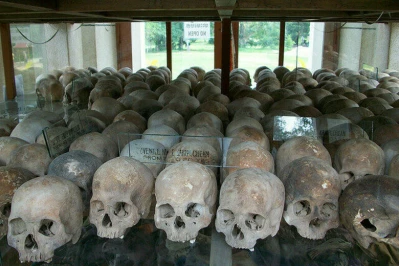
Visit the Tuol Sleng and the Killing Fields
In the chronicle of 20th century horrors, Cambodia unfortunately is one of the major stories. The country was ravaged for over thirty years with war, political upheaval and massive genocide. As Cambodia has begun to come back, the morbid curiosity of its sordid past is a main reason why. This half day adventure takes you to the Tuol Sleng Museum of Genocide in Phnom Pehn followed by a visit to a former killing field outside the city.
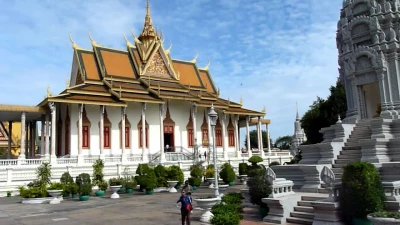
Phnom Penh City Tour
This full-day city tour takes in the unique Khmer heritage and French-influenced architecture that abound in and around Phnom Penh. You visit key cultural highlights including: Wat Phnom, Royal Palace, The Silver Pagoda, National Museum, the Tuol Sleng Museum.
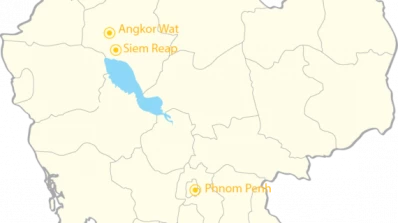
Excursion from Phnom Penh to Ho Chi Minh by Vintage Boat
Traveling the mighty Mekong River. Capitals of Phnom Penh. Houses over fish rearing pens in Chau Doc. The boat yard of Long Xuyen. Marguerite Duras hometown of Sa Dec. The aquatic garden of Vinh Long. The floating market in Cai Be.

Treasures along the Mekong river from Cambodia to Vietnam
Discovering two beautiful Indochina countries with their stunning geography, amazing cuisine, pristine beaches and daily activities like the way locals do. From the upstream to the downstream of the Great Mekong river, our journey will bring you to the fantastic landscapes, breathtaking architectures, historical sites, friendly smiles of local residents and help to reveal secrets that make this region so special. One magnificent Vietnam and one hidden charming Cambodia, you will have unforgettable experiences with a ton of wonderful moments!

Treasures along the Mekong river from Cambodia to Vietnam
Discovering two beautiful Indochina countries with their stunning geography, amazing cuisine, pristine beaches and daily activities like the way locals do. From the upstream to the downstream of the Great Mekong river, our journey will bring you to the fantastic landscapes, breathtaking architectures, historical sites, friendly smiles of local residents and help to reveal secrets that make this region so special. One magnificent Vietnam and one hidden charming Cambodia, you will have unforgettable experiences with a ton of wonderful moments!

Be Blessed by Monks in a Pagoda in Oudong
Imagine a private blessing ceremony prepared just for you and carried out by monks. This is what awaits you in the city of Oudong. Once the capital in the latter stages of the Khmer Empire, Oudong is the crowning site of a former king. It sits atop two parallel ridges north of Phnom Penh. The location offers incredible views of rolling sugar palm trees found in the scenic countryside. In one of the contemporary pagodas, Buddhist monks are awaiting to host a private blessing ceremony just for you. They’ll wish you health and, of course, a safe journey as you continue on to Phnom Penh. But before the day is over, you’ll stop at a silversmithing village and enjoy local food at a restaurant.

Mekong Sunset Cruise
The Mekong river is home to the Tonlé Sap, a freshwater lake that boasts of floating villages and a vibrant ecosystem. Also known as the Boeung Tonlé Sap, it’s best enjoyed from June to October when there’s access to the surrounding forests. For bird watchers, December to April is the ideal time to come here as sanctuaries are filled during that time. The freshwater lake is the largest in Southeaster Asia, spanning 250 km in length and 100 km in width. It’s huge, but shallow, going only as deep as 10 meters. The most popular village is Chong Khneas, which offers scenery of many houses, shops, and schools bobbing over the water. The area is suited to tourists, with souvenir and snack shops littered throughout. There’s also a Gecko Environment Center. Enjoy coconut juice and other refreshing cuisines aboard your private boat as you bask in this sunset cruise.

Phnom Penh Night Excursion On Board a Vespa
Lounge with a rooftop bar as you look down upon the beautiful Mekong River. Sitting near the Phnom Penh riverfront is a once in a lifetime experience. You’ll get to enjoy it on this blissful night tour where you’ll drink and dine like a local. Switch things up when you get on your Vespa and zoom through the busy streets of Phnom Penh.

Discover Tonle Bati, Takeo, Phnom Da, and Phnom Chisor
Discover at least four ancient temples in this exclusive getaway which begins on the incredible lake of Tonle Bati. A popular fishing spot for locals and tourists alike, the lake has its own unique attractions. Bamboo shacks are located throughout the water, making it a perfect getaway spot for visitors and residents. Food and drink stand nearby mean you’ll never have to leave if you don’t want to.

Bokor Bike And To Hike Mountain Waterfall
This whole day adventure allows one to enjoy the Kampot countryside by bike and Veal Pourch Waterfalls on foot. After beginning the day at the market, mingling with townspeople going about their daily business, you head out on bike through the local countryside. On the way you will pass through Khmer villages and alongside rice paddies being worked by the local farmers. Reaching the base of Bokor Mountain, the bikes are left behind and the hike about an hour the rest of the way to the remote Veal Pourch Waterfalls. If you wish, you can choose to swim in the cool, clean waters of the pool underneath them, while relaxing and enjoying the tropical jungle scene that surrounds you. Lunch is served with the wine of your choice, and after a leisurely interlude, you return down the mountain to your bike and return to the lodge. A sunset sea-and-river cruise completes a perfect day.

Excursion through Koh Dach Island by Tuk Tuk
Go through rice paddies, vegetable farms, and fruit orchards as you explore the quiet isle of Koh Dach by Tuk Tuk vehicle. Look no further for tranquility if you want to take a break from Phnom Penh. You’ll also visit Mekong Island, which gives you scenic views while taking a peaceful drive along the river. When you cross over the Tonlé Sap River via ferry, you’ll pick up your bicycle for a drive along the village’s dusty roads. You’ll be treated to Cambodia’s unique take on handcrafting practices, including silk weaving, pottery, woodcarving, and dyeing. As you explore the area, you’ll taste the delicious seasonal fruit and eat local delicacies in gorgeous restaurants.

Visit the Tuol Sleng and the Killing Fields
In the chronicle of 20th century horrors, Cambodia unfortunately is one of the major stories. The country was ravaged for over thirty years with war, political upheaval and massive genocide. As Cambodia has begun to come back, the morbid curiosity of its sordid past is a main reason why. This half day adventure takes you to the Tuol Sleng Museum of Genocide in Phnom Pehn followed by a visit to a former killing field outside the city.

Phnom Penh City Tour
This full-day city tour takes in the unique Khmer heritage and French-influenced architecture that abound in and around Phnom Penh. You visit key cultural highlights including: Wat Phnom, Royal Palace, The Silver Pagoda, National Museum, the Tuol Sleng Museum.

Excursion from Phnom Penh to Ho Chi Minh by Vintage Boat
Traveling the mighty Mekong River. Capitals of Phnom Penh. Houses over fish rearing pens in Chau Doc. The boat yard of Long Xuyen. Marguerite Duras hometown of Sa Dec. The aquatic garden of Vinh Long. The floating market in Cai Be.
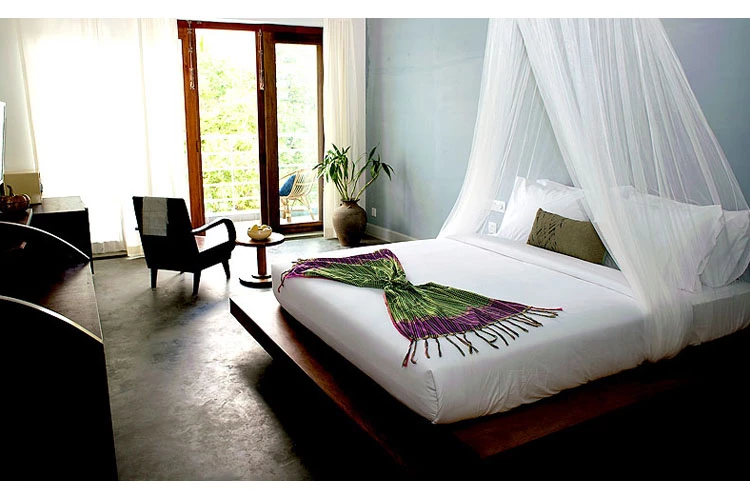
iRoHa Garden Hotel & Resort - Phnom Penh
The concept of iRoHa Garden Hotel & Resort is "Cross Culture"
Offering an outdoor pool and big grass garden with tropical plants and spa,iRoHa Garden Hotel & Resort is located in a residential area for VIPs, Quiet & Secure in the center of Phnom Penh.
26 rooms in The Hotel and 5 rooms in Villa Theato, each has a different interior, inspired by the south east Asia and Cambodia.
iRoHa Garden Hotel & Resort - Phnom Penh
The concept of iRoHa Garden Hotel & Resort is "Cross Culture"
Offering an outdoor pool and big grass garden with tropical plants and spa,iRoHa Garden Hotel & Resort is located in a residential area for VIPs, Quiet & Secure in the center of Phnom Penh.
26 rooms in The Hotel and 5 rooms in Villa Theato, each has a different interior, inspired by the south east Asia and Cambodia.

PAVILION hotel - Phnom Penh
PAVILION hotel - Phnom Penh

Plantation Urban Resort & Spa - Phnom Penh
Plantation creates authentic experiences for our guests through the promotion of cultural exchange, architectural heritage and local arts, regularly hosting exhibitions and shows by Khmer and international artists since opening in 2011.
Plantation Urban Resort & Spa - Phnom Penh
Plantation creates authentic experiences for our guests through the promotion of cultural exchange, architectural heritage and local arts, regularly hosting exhibitions and shows by Khmer and international artists since opening in 2011.
Penh House & Jungle Addition - Phnom Penh
Penh House: Inspired by Cambodia’s tropical nature and New-Khmer architecture, an indoor oasis with breathtaking views over the historic quarter. Pagoda roofs and the Royal Palace’s majestic trees create an aura of serene tranquility amidst the high-rises and traffic of the city.
Penh House & Jungle Addition - Phnom Penh
Penh House: Inspired by Cambodia’s tropical nature and New-Khmer architecture, an indoor oasis with breathtaking views over the historic quarter. Pagoda roofs and the Royal Palace’s majestic trees create an aura of serene tranquility amidst the high-rises and traffic of the city.
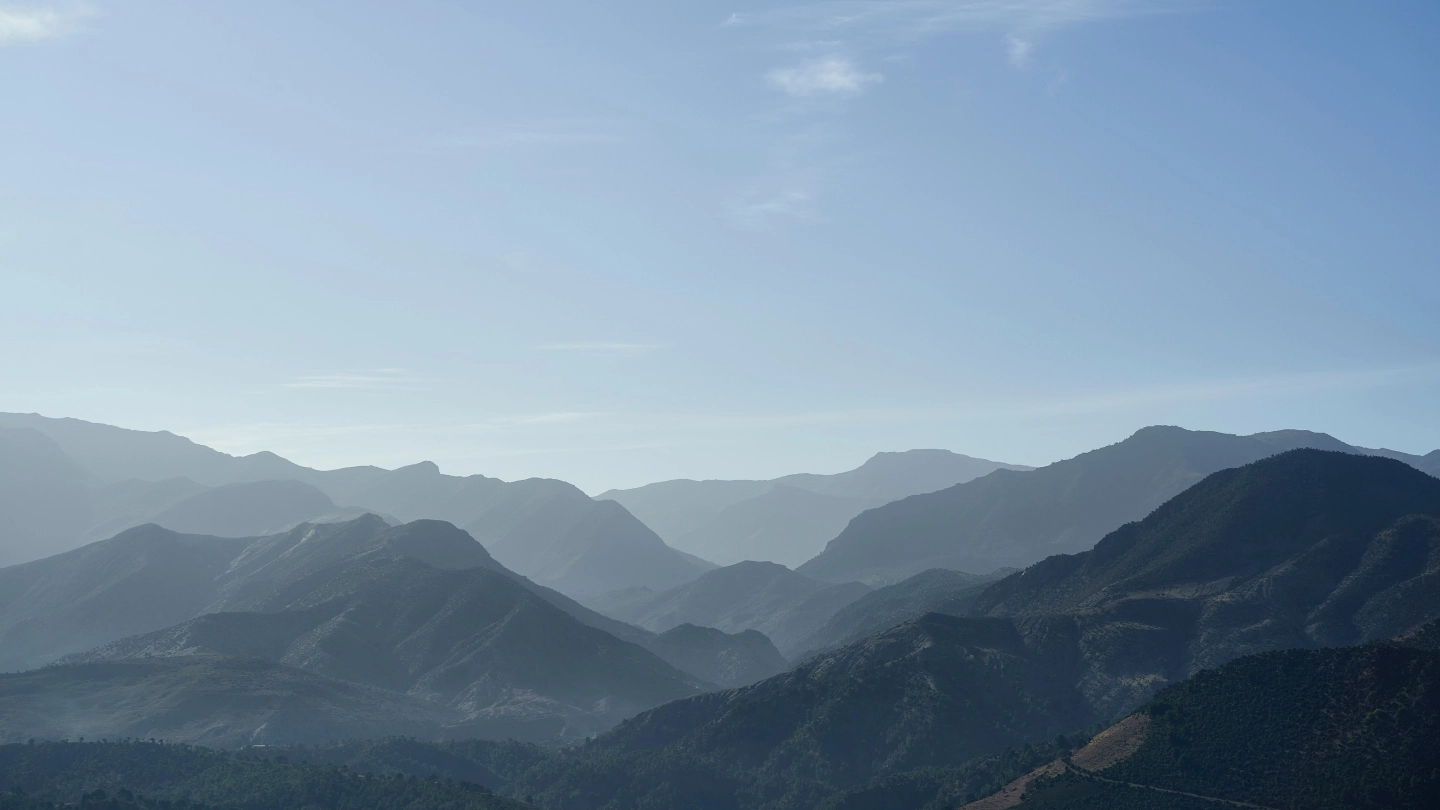
Why Adventure Asia
The company aims to serve soft/medium vacation options to the experienced adventure customer seeking uniquely styled expeditions, rather than traditional tourist-oriented itineraries that are prevalent.
Event Festival
Browse a month-by-month breakdown of suggested itineraries, seasonal activities, climate considerations and festivals.
Liberation Day: marking the day the Cambodian people were freed from the oppressive regime of the Khmer Rouge, this nationwide celebration sees fireworks and festivities take place in all corners of the country.
Weather and Climate

Cambodia experiences four seasons, with the cool season spanning November through February being the most ideal time to visit. This period is consequently the peak tourist season, with December and January seeing the most visitors and offering the lowest humidity. At this time, temperatures hover around 30″C but drop significantly in the night-time, allowing for a restful night!s sleep.
March to May sees the weather heat up with temperatures peaking at 40″C-plus in April, the hottest month of the year. The welcome rains arrive in May and continue through to August but are usually limited to afternoon thunderstorms, making this still a great time to visit. Although the rain cools things down considerably, temperatures and humidity remain high during the wet season. September and October experience shorter afternoon rain storms until the cool, dry season sets in around November.
During the rainy season many of Cambodia!s roads and rivers become impassable, hindering travel. However, if you are prepared to deal with transport delays and daily thunderstorms, this is when the famous paddy fields take on a vibrant green shade making it an aesthetically stunning time to visit.
Travel FAQs
Essential Information
There is a range of exciting ways to explore Cambodia safely and experience this once powerful kingdom and its ancient cultural wonders first hand. By touring the country with a knowledgeable guide you will be able to avoid many of the dangers that present themselves to travelers in this mainly rural and undeveloped country. While travel in Cambodia has become increasingly accessible and popular in the past two decades, there are some cautions that should still be taken. Traveling by road and water are the most exhilarating ways to explore the country, with the latter offering a smoother ride. Main road routes are in a reasonable condition while roads in rural areas are undeveloped and lack decent infrastructure resulting in a bumpy ride! Boat travel is a popular way to get between Phnom Penh and Siem Reap, Siem Reap and Battambang, and Sihanoukville and Koh Kong; but wet season services are subject to weather conditions meaning most travelers avoid visiting during the wettest months (July to September). There are no mandatory vaccinations for travel to Cambodia but visitors are advised to be up- to-date with typhoid, hepatitis A and B and cholera vaccinations. Visit your doctor at least three weeks in advance of your departure to ensure vaccinations are effective upon your arrival. Some rural areas are affected by malaria and Japanese encephalitis and long-term visitors, or those visiting areas publicized as affected, may wish to take medication or be inoculated. Pharmacies are on hand in the larger towns to treat minor ailments such as diarrhea, and carrying a small first-aid kit can come in handy. Should you get seriously sick in Cambodia, medical attention can be found at hospitals in the capital with only basic medical facilities available elsewhere. However, health-care standards in Cambodia fall short of international standards and serious emergencies should be treated in Bangkok, Thailand. Taking out travel insurance with health coverage is a good way to ensure you are not faced with large bills in the event you need to be evacuated by air to a neighboring country. Make sure your insurance covers all the activities you plan, especially when doing white water rafting, cycling or jungle trekking. If you plan to partake in demanding physical activities such as trekking, rafting or cycling while in Cambodia, make sure you are physically prepared for the task by training and working out before leaving home. You may also need to prepare specialist equipment depending on your travel itinerary, including suitable walking shoes and waterproof clothing. While few visitors experience any crime or violence whilst visiting Cambodia, it is important to take care. Cambodia is one of the poorest countries in Asia making it essential to be discreet with your belongings and take precautions with your personal safety. Night-time travel is best done in groups and by cyclo or taxi. Political demonstrations have the potential to turn sour in Cambodia and are best avoided, as are illegal drugs; for which local punishment for possession is severe.
Getting There
The most convenient way to reach Cambodia is to fly here from a neighbouring country. The country!s two international airports, at Phnom Penh and Siem Reap, serve regular regional flights to Hong Kong (China), Vientiane (Laos), Bangkok (Thailand) and Ho Chi Minh City (Vietnam) among a handful of other Asian destinations. Low-cost carriers AirAsia and Jetstar Asia offer the best flight deals to Cambodia; Bangkok Airways, Asiana Airlines, China Southern Airlines, Eva Airways, Dragonair, Korean Air, Malaysia Airlines, Lao Airlines, Vietnam Airlines and Thai Airways International are among the other carriers that serve Cambodia. For travelers starting their trip at Angkor Wat, Siem Reap-Angkor International Airport is the most convenient gateway. However, it is typically cheaper to fly into Phnom Penh International Airport, meaning many travelers opt to take a connecting bus or boat to Siem Reap from the capital. Depending on what activities you have planned on your trip, it can be wise to book an open return ticket to allow for greater flexibility should you change your plans or become delayed. Arriving by land is also common and cheaper than flying. Thailand offers six international border crossings that are open daily from 07:00 to 20:00. The crossing at Poipet is the most popularly used. Buses for Poipet leave from Bangkok!s Ekamai Station (Eastern Bus Terminal) and passengers must change buses at the border for connections to Phnom Penh, Siem Reap and other Cambodian towns. If you plan to cross into Cambodia from Vietnam, buses are available from Ho Chi Minh City to Phnom Penh and Siem Reap but passengers must transfer to a different bus at the border. Ferries tour the Mekong Delta, taking passengers from Ho Chi Minh City to Phnom Penh. The journey can be done in just five hours but most travellers prefer to spread it across a few days, allowing time to take in some of the spectacular sights along the way. Laos offers a single land border crossing into Cambodia at Voeung Kam but transport from Dom Kralor on the Cambodian side can be difficult to organise. It is also possible to arrive by boat from Laos along the Mekong but expect to be overcharged by border guards on this route
Getting Around
Adventure Asia traveling arrangements are completely taken care of you from the moment you arrive in Cambodia. Your personal concierge will assure the safest, most comfortable routes and conveyances are utilized. The limited domestic air services available in Cambodia are useful for tourists who are short on time as land travel can be slow going. The primary air hubs are Phnom Penh International Airport and Siem Reap-Angkor International Airport, with regular domestic connections (around six flights a day) available between these two airports on Siem Reap Airways and PMT Air flights. There are also limited services from Phnom Penh to Banlung and Sihanoukville a few times a week. Passengers must pay a nominal airport departure tax for all internal flights. The second most popular means of getting around the country is by bus. Buses in Cambodia are cheap but often slow and unreliable. For this reason, most trekking groups travel by modern air-conditioned minibus or four-wheel drive, which is quick and safe. Road routes from the capital to Siem Reap, Sihanoukville and Sisophon are in a reasonable condition. Likewise, the routes to Stung Treng and Kratie are well maintained. Most other roads are unsealed and unpaved so expect a bumpy ride and the local buses servicing these routes to be infrequent. Boat travel is popular in Cambodia, particularly between Phnom Penh and Siem Reap, but is seasonal. Boats along this route are more expensive than the buses which connect these two places but get you there in only five hours. Other busy routes include Siem Reap to Battambang and Sihanoukville to Koh Kong. There is a single rail line in operation in Cambodia between the capital and Battambang, however services are not reliable and only run every other day.
Visa and Permits
The majority of nationalities can obtain a 30-day visa for travel in Cambodia either as an e-visa online before arrival, or on arrival. A one month on-arrival tourist visa costs around USD 30 and requires one passport-sized photo. All visitors require a passport with at least six months’ validity. E-visas are only valid for entry through Phnom Penh, Siem Reap and Sihanoukville international airports, and Cham Yeam (Koh Kong), Poipet (Banteay Meanchey), Bavet (Svay Rieng) and Tropaeng Kreal (Stung Treang) land borders. If you are arriving at another land border not mentioned above, you should be able to obtain an on-arrival tourist visa. Citizens of Afghanistan, Algeria, Bangladesh, Iran, Iraq, Nigeria, Pakistan, Saudi Arabia, Sri Lanka and Sudan will need to make visa arrangements in advance. If you are not eligible for an e-visa or a visa on arrival, you will need to submit an application at your local Cambodian embassy or consulate. Allow up to three weeks for processing. How to apply for a Cambodia e-visa Go to evisa.gov.kh. This is the only official government e-visa portal for Cambodia. Be aware that there are other websites that falsely claim to provide this service. Follow the prompts to sign up, sign in, apply, and pay online. After your application has been processed and approved (usually within three business days), download your e-visa from the online portal. Print out your e-visa, and present on arrival in Cambodia. Exemptions to requiring a visa in Cambodia Some nationalities may be exempt from requiring a visa in Cambodia for a period of 14 or 30 days, depending on your country of origin. Visas are the responsibility of the individual traveller. Entry requirements can change at any time, so it’s important that you check for the latest information. Please visit the relevant consular website of the country or countries you’re visiting for detailed and up-to-date visa information specific to your nationality. Visas can take several weeks to process, so familiarize yourself with any requirements as soon as you have booked your trip to allow for processing time.
Local Customs
Cambodian society is largely Buddhist and function according to a hierarchy. As such, it is not uncommon for locals to ask foreigners personal questions in order to ascertain their social rank. This is not considered impolite in Cambodia and is simply a way to determine how best to interact with you in a respectful manner. The concept of keeping face is also paramount therefore it is important not to embarrass, to get angry with or to criticise anyone in public, which could cause them to lose face. Cambodians greet one another with a som pas; a bow with hands placed together in a prayer- like position at chest level. It is considered appropriate to greet or introduce the highest ranking person in a group first. When entering a Cambodian home, always remove your shoes at the entrance. Most Cambodians sit on mats that are laid on the floor in their homes and visitors should follow suit. Women should carefully place their legs to one side and avoid pointing the soles of their feet at anyone. Men can sit cross-legged. Visitors should avoid contact with the feet and heads of Cambodians. The head, which is considered the most sacred part of the body, should not be touched; while the lowest part of the body, the feet, should not be pointed at anyone. It is also important for women not to touch monks, who must undergo a religious purification ceremony in the event this happens. Both men and women, especially when visiting Buddhist temples where it is necessary to cover both arms and legs should wear conservative dress throughout Cambodia. Visitors need not avoid talking about Cambodia!s turbulent past altogether but any conversation of this nature should be approached with delicacy and abandoned if it appears the local you are talking to does not wish to discuss the topic.
Events and Festivals
January Liberation Day: marking the day the Cambodian people were freed from the oppressive regime of the Khmer Rouge, this nationwide celebration sees fireworks and festivities take place in all corners of the country. February Tet Festival: the biggest event of the year in neighbouring Vietnam, Vietnamese New Year is observed in Cambodian provinces bordering Vietnam and by those of Vietnamese descent with fireworks, musical performances and lively merriment. March International Women’s Day: this UN-designated day is observed on 8th March and serves to celebrate the achievements of women and to help them to fulfil their potential. Activities are commonly held at schools on this day. April Cambodian New Year: the biggest event of the year marks the start of the new lunar year according to the Khmer calendar and spans three days: Moha Sangkran, Vornborth, and Thngai Lieng Sak. During this time homes are decorated, games are played and offerings are made at Buddhist temples. May Visaka Bochea Day: this religious festival is held in mid-May in honour of the Buddha!s birth, enlightenment and death, and consequently is a great day to capture locals making offerings at temples nationwide. Royal Ploughing Ceremony: this ancient harvest festival is observed at the start of the rainy season, when farmers plough their fields. Cattle are given a choice of foods to eat and predictions concerning the forthcoming harvest are then made based on the results. June International Children!s Day: this fun day, designated by the UN to mark the adoption of the Declaration of the Rights of the Child, sees schools and other organisations host lively children!s activities. Queen Norodom Monineath Sihanouk’s Birthday: the queen!s birthday is celebrated by the royal family with regal splendour and religious ceremonies. While Cambodians don!t participate in these events, they get to enjoy a public holiday. July Buddhist Lent: also known as Bonn Chol Preah Vassa, this religious event sees Buddhist monks across the nation prepare to retreat to their temples for a three-month period. The retreat helps to prevent damage to the paddy fields during the rainy season. August Cambodian Living Arts Youth Arts Festival: known as Mahasraop in Khmer, this annual arts event showcases various art forms and performances by Cambodian students. The event is held in a different location each year. September Constitution Day: observed on the 24th September, this public holiday marks the signing of the Cambodian constitution by King Sihanouk in 1993. Bonn Pchum Ben: this religious day sees Cambodians pay their respects to their deceased ancestors by making offerings to them at Buddhist temples across Cambodia. October King Norodom Sihanouk!s Birthday: the king!s birthday celebrations see Cambodians across the country celebrate for three days. Special events are typically held in front of the royal palace in Phnom Penh, culminating in a firework display. November Bon Om Tuk: also known as the Water Festival, the most popular place to appreciate this lively event is in Phnom Penh, where boat races and fireworks are hosted over the course of three days. Angkor Photography Festival: held in Siem Reap, the region!s first annual photography event spans one week and allows Cambodian photographers to show off their talent. December International Half Marathon: runners from all corners of the globe gather at Angkor Wat to participate in this half marathon much to the delight of the thousands of supporters who come out to cheer the contestants on.
What will it cost for a…?
Cambodia’s unit of currency is the riel. Prices here are approximate and shown in US dollars for ease of comparison. Street snack = USD 0.50–1 Bottle of local beer = USD 1.50 Simple meal at a local restaurant = USD 5–10 Sit-down dinner at a nice restaurant = USD 25–50
Are credit cards accepted widely in Cambodia?
Credit cards are usually accepted by modern hotels, large retailers and tourist sites but are less commonly accepted by smaller shops, cafes and market stalls in rural areas. Always carry enough cash for smaller purchases in case credit cards are not an option.
What is ATM access like in Cambodia?
ATMs are widely available in larger cities, like Phnom Penh and Siem Reap, but are less common in small villages or rural areas. Make sure you have enough cash before leaving urban areas.
Is Cambodia accessible for traveler with disabilities ?
Cambodia is not always an easy country to travel to for people with mobility or vision disabilities, due to uneven and often broken footpaths, bumpy and potholed roads, crowded public transport and steps galore at temples. In saying this, local people are extremely hospitable and are likely to help out any travellers in need. The country’s biggest drawcard, the temples of Angkor, has had some ramps added in recent years but the paths are generally uneven and stairs challenging even for travellers without disabilities. Siem Reap and Phnom Penh airports have had recent upgrades in terms of wheelchair ramps and some higher end hotels may have accessible rooms. Many guesthouses and hotels have ground floor rooms although may not have other accessible facilities. Taxi and remorks can be easily and affordably hired to get around for city tours.
What's your refund policy?
Below is our cancellation and refund policy: 🔸 60 days prior to arrival date: No cancellation charge for the land cost. We guarantee 100% of the land cost back. The airline cancellation fees are applied according to the airline's policy. 🔸 59 - 30 days prior to arrival date: 5% cancellation charge + airfare cancellation fees 🔸 29 - 15 days prior to arrival date: 10% + airfare cancellation fees. 🔸 14 - 8 days prior to arrival date: 40 + airfare cancellation fees. 🔸 7 days prior to arrival date: 100% 🔸 No show: 100% Please note that the domestic flight tickets in the package are non-refundable





